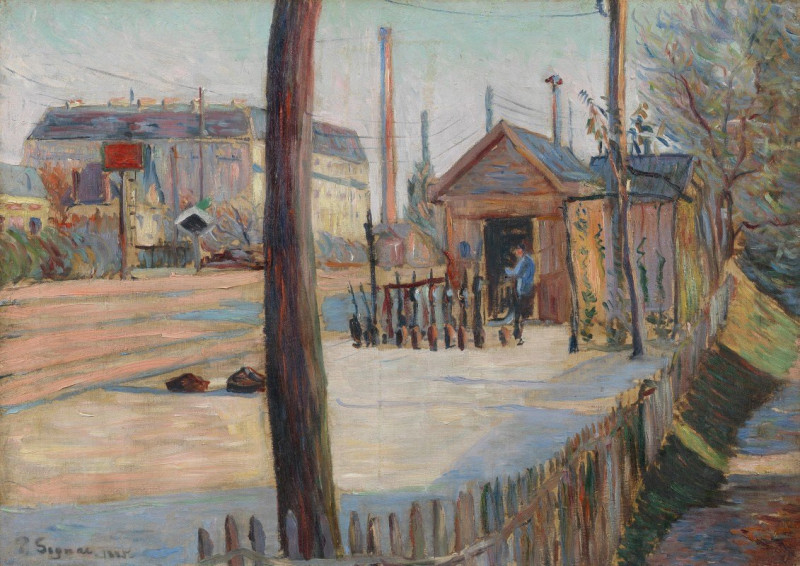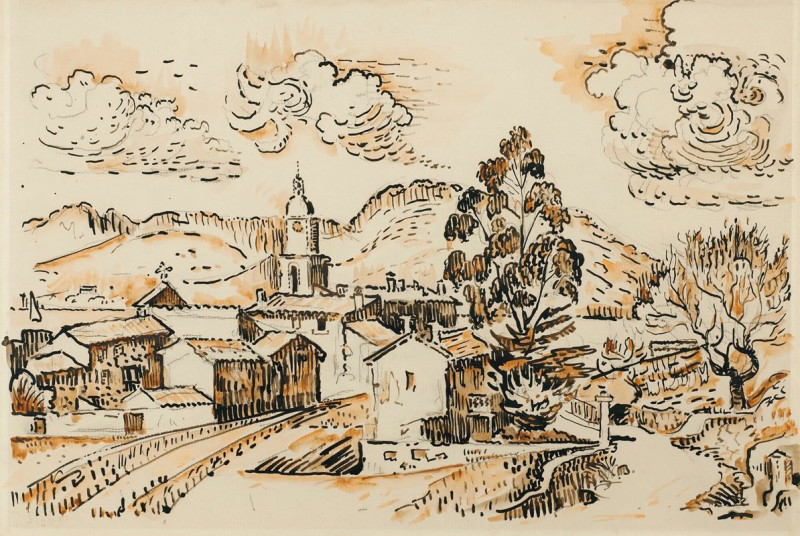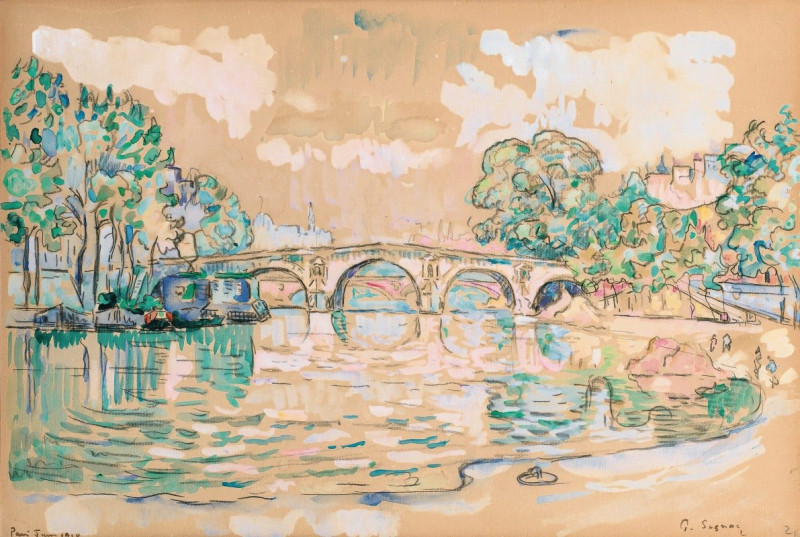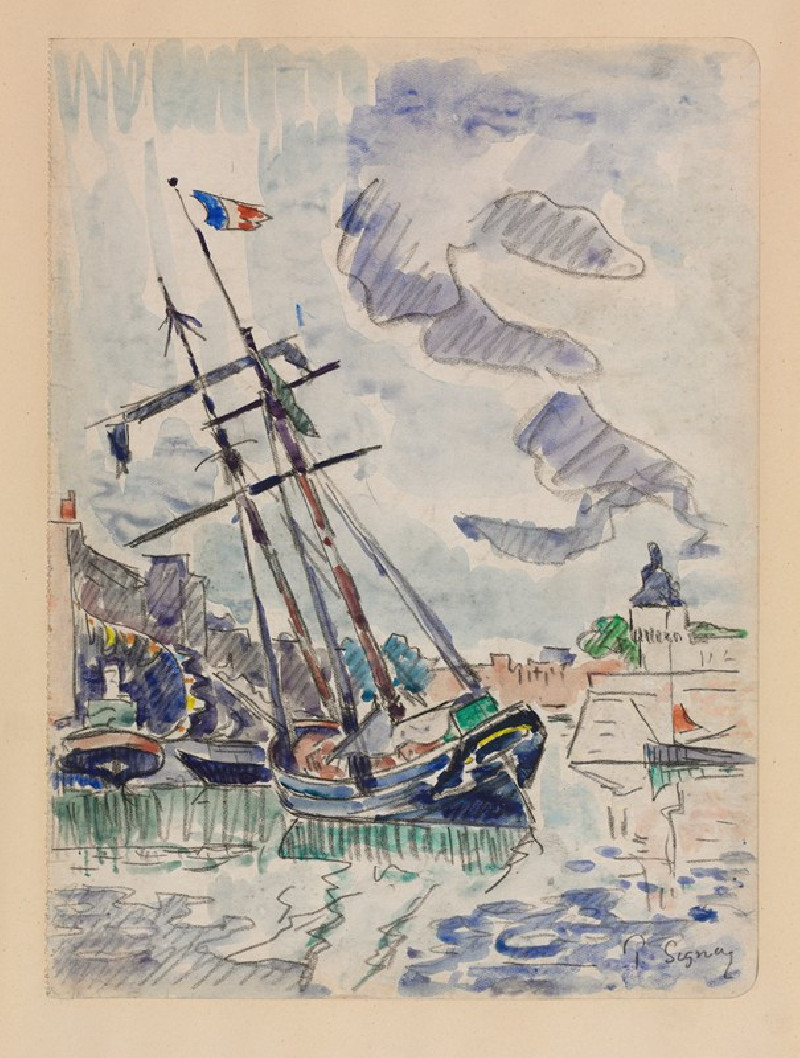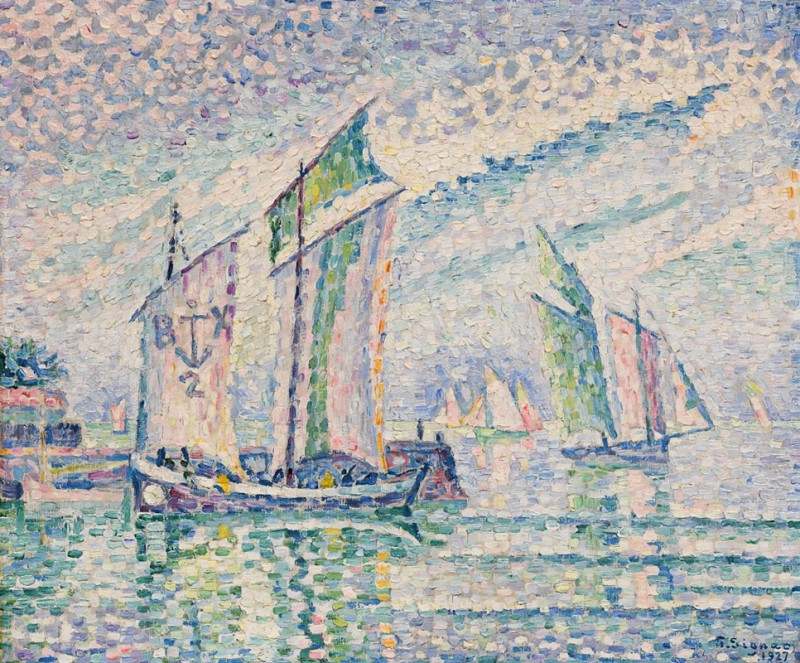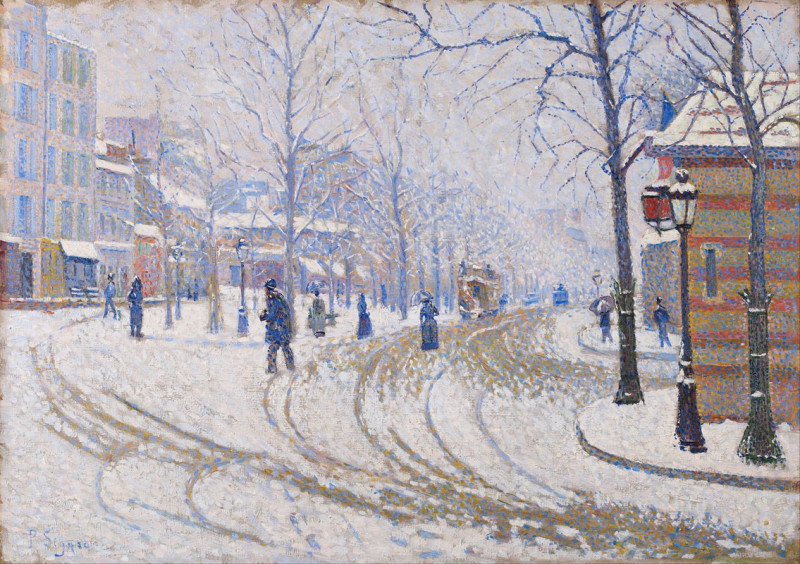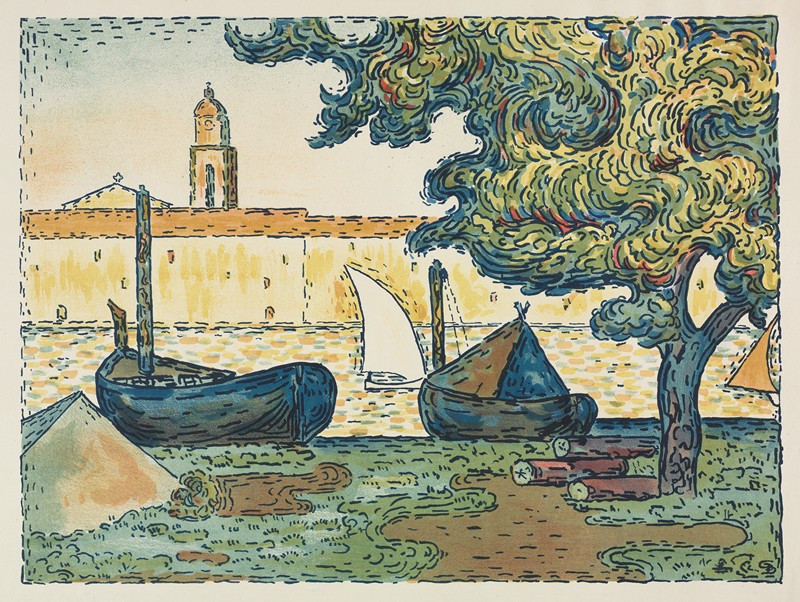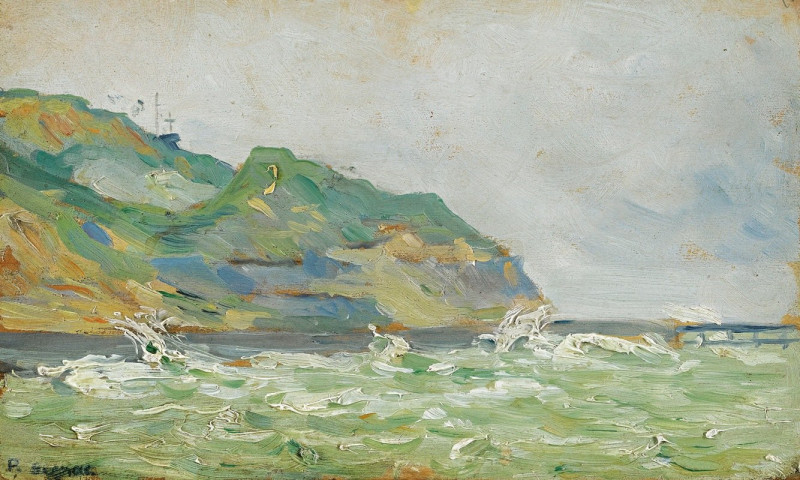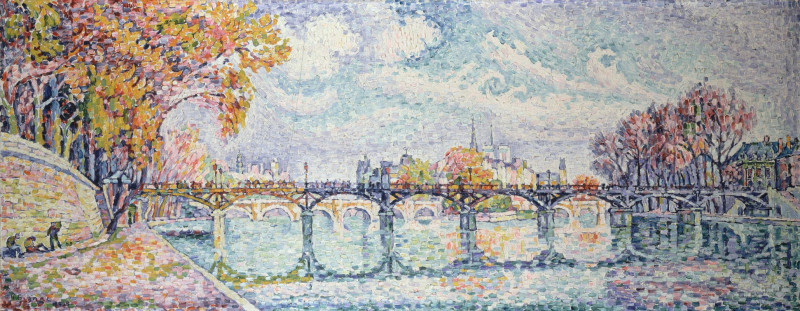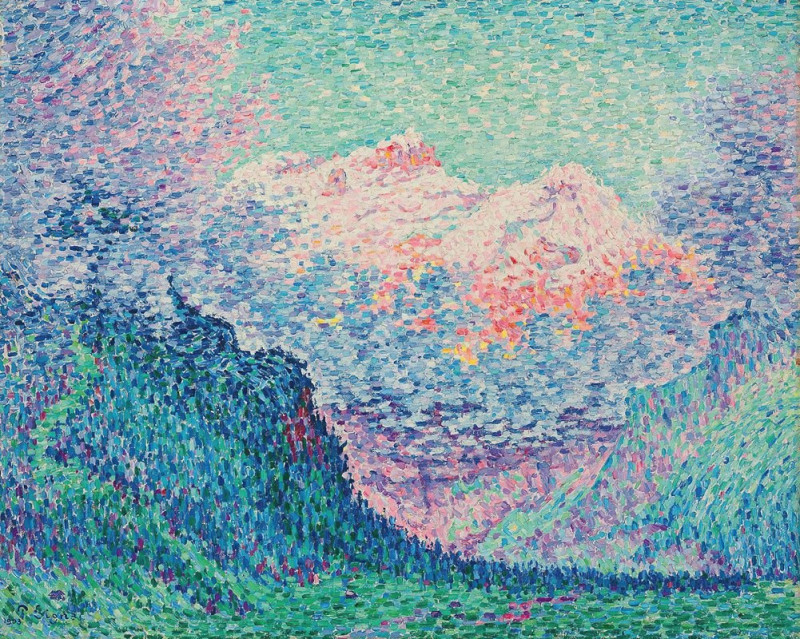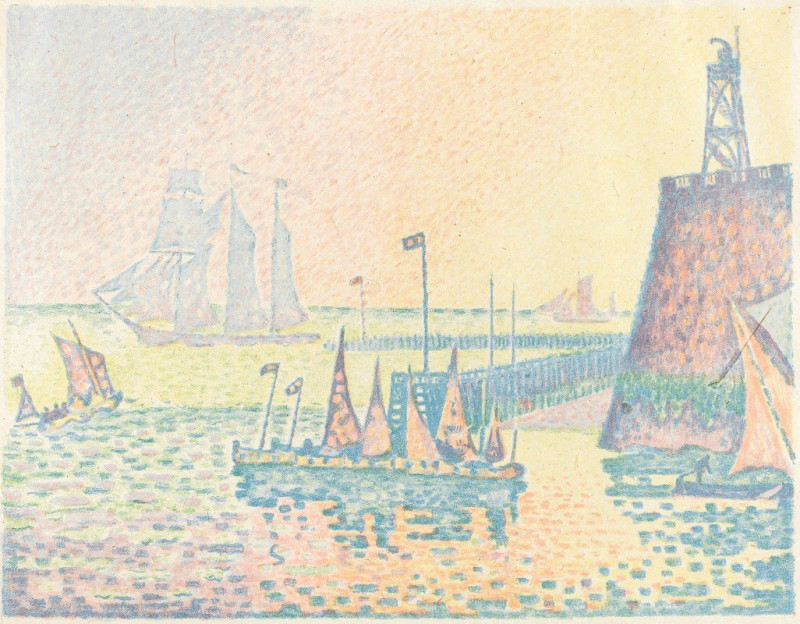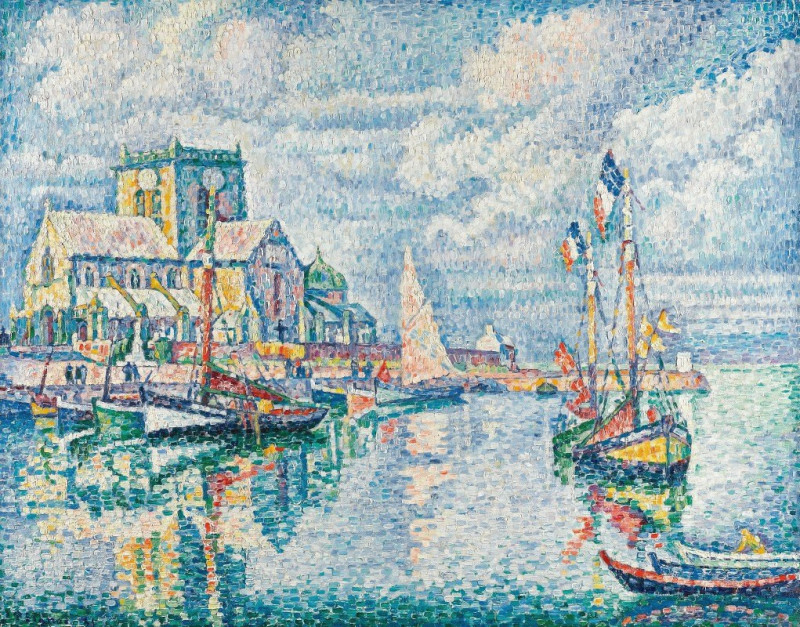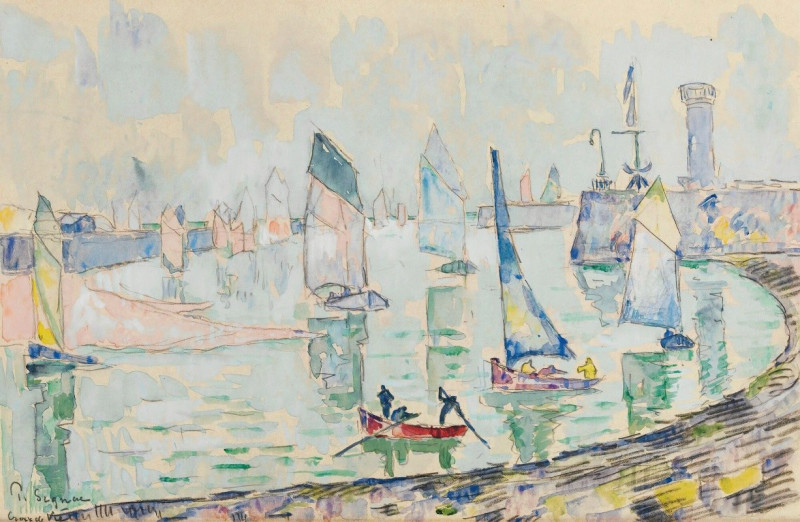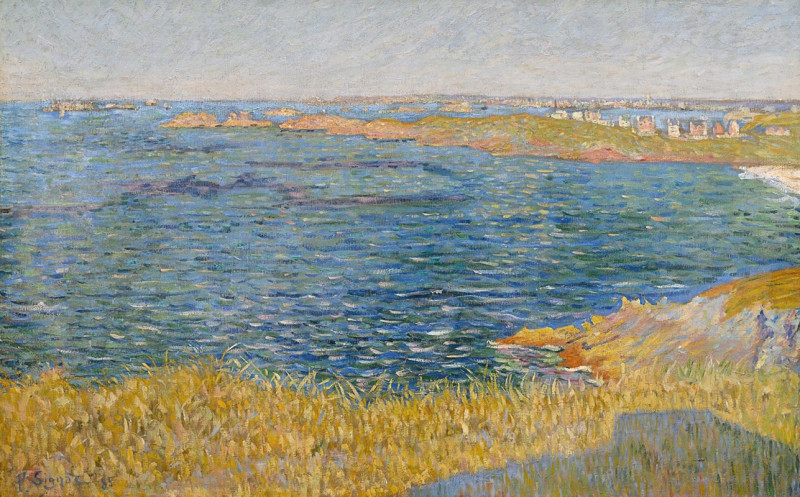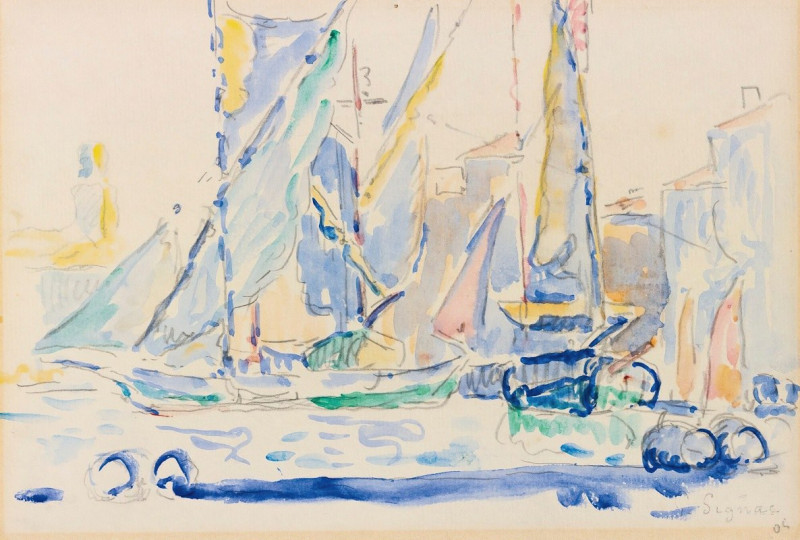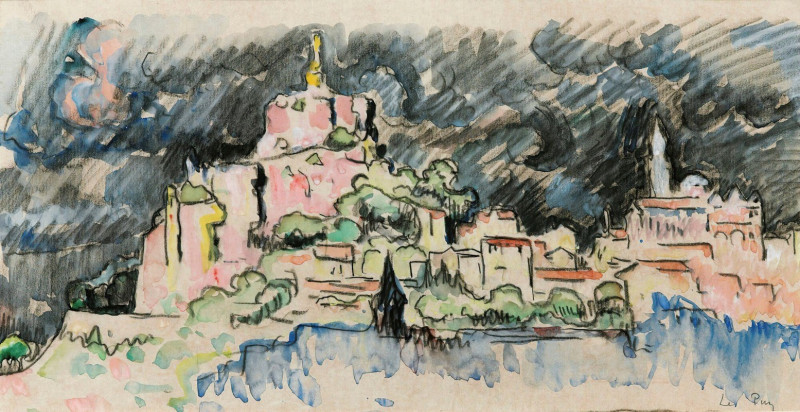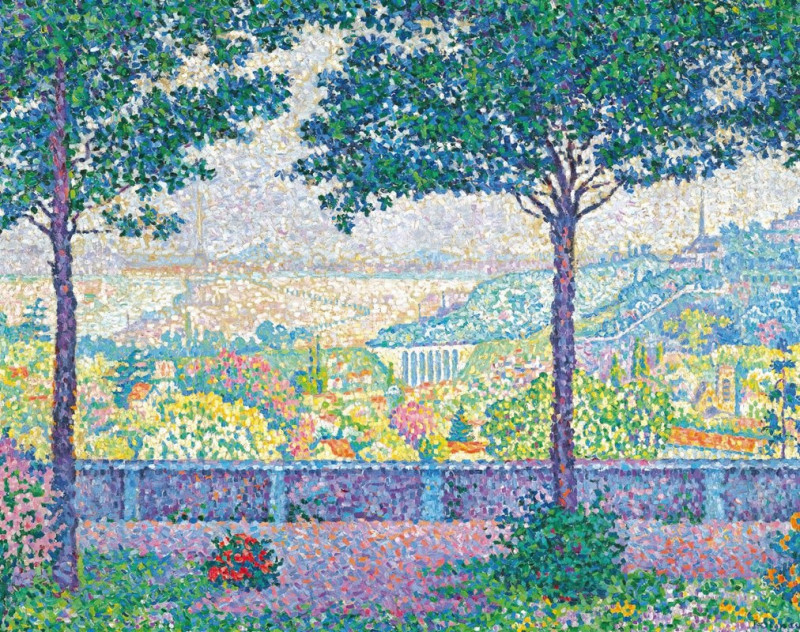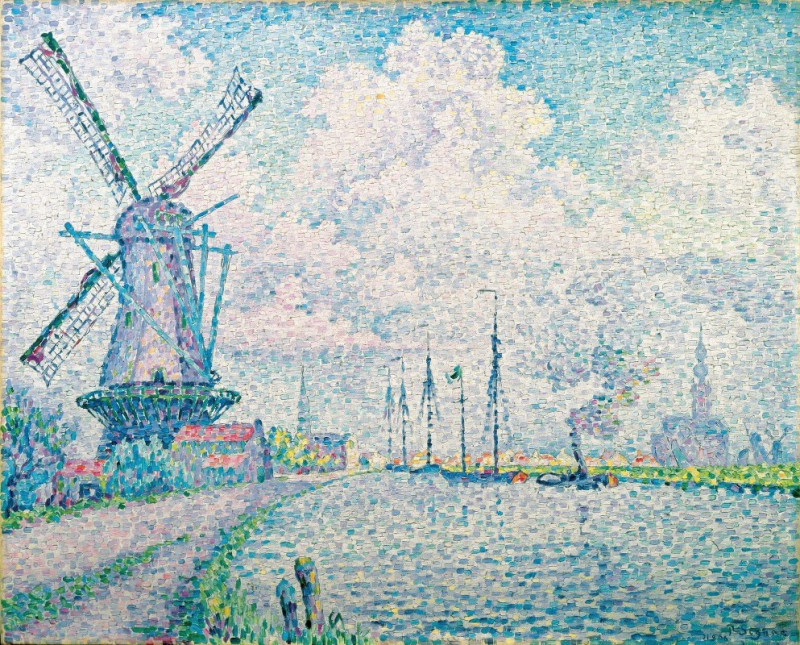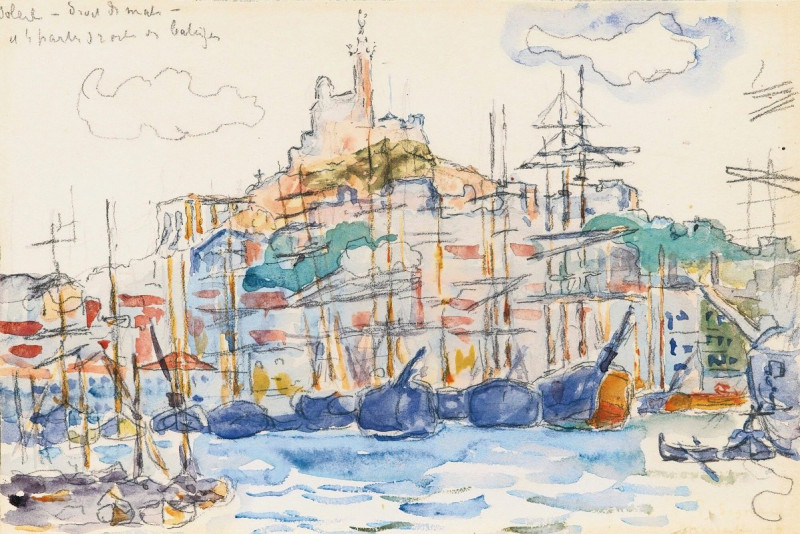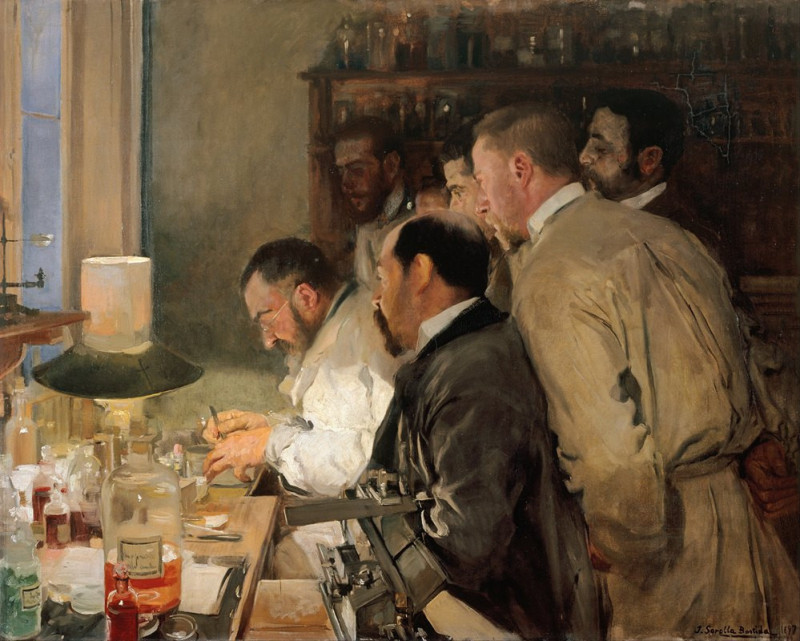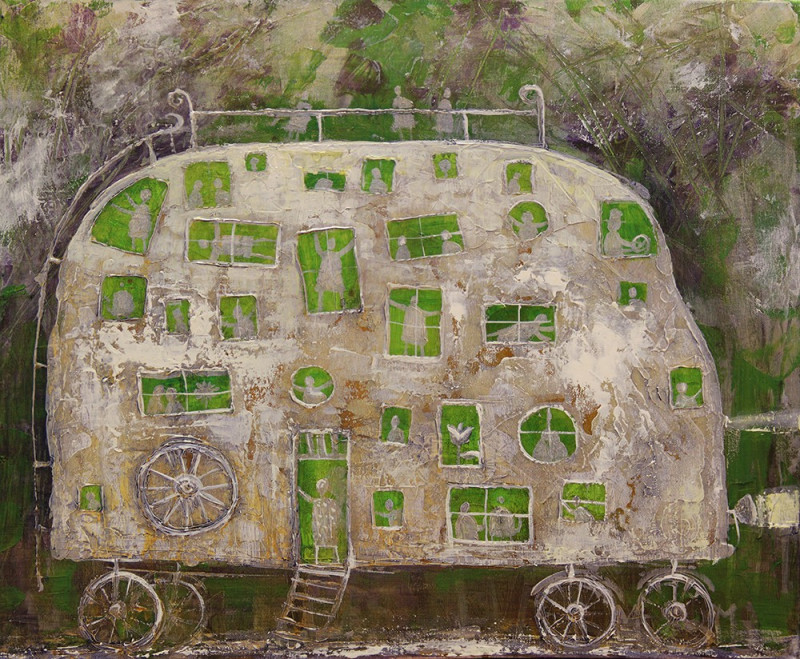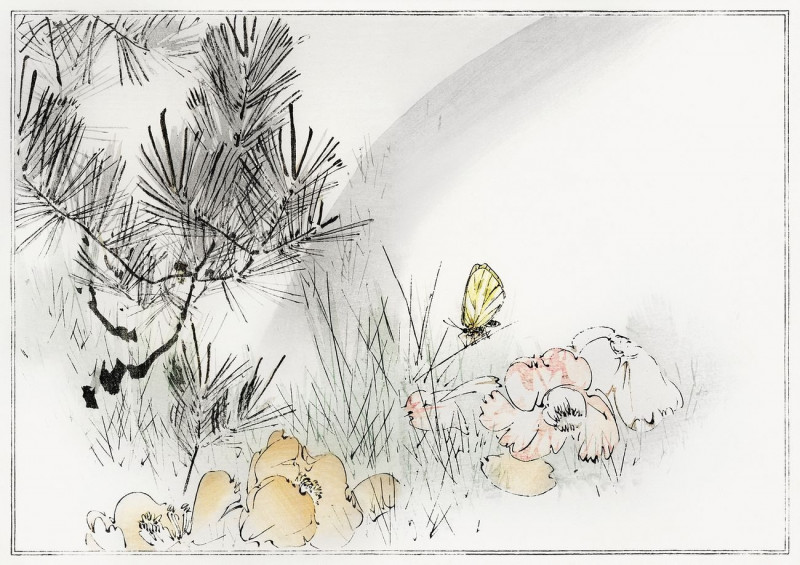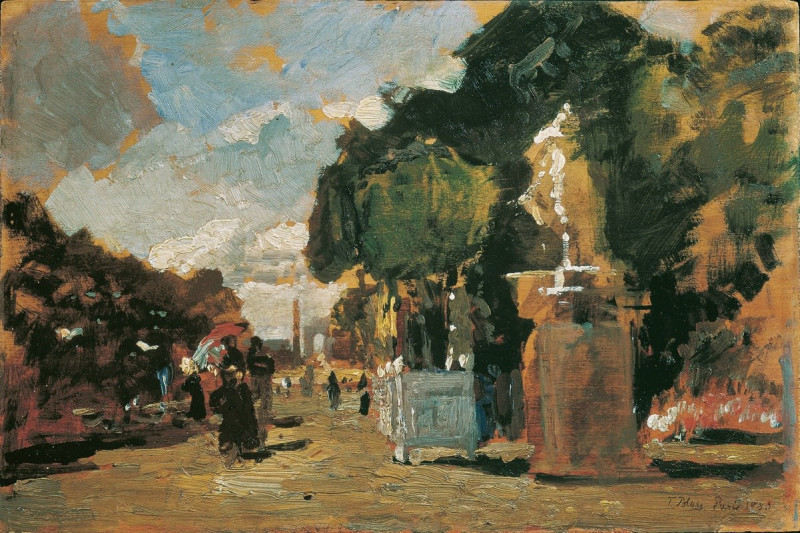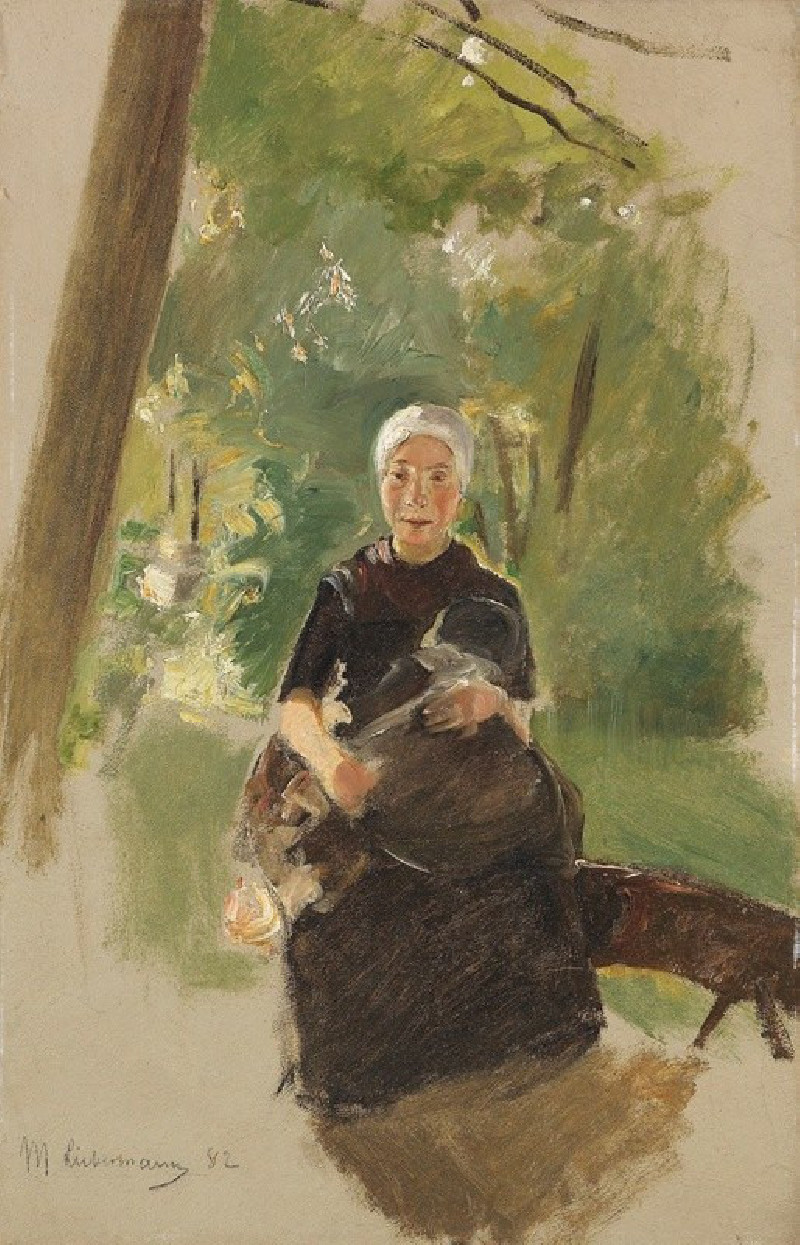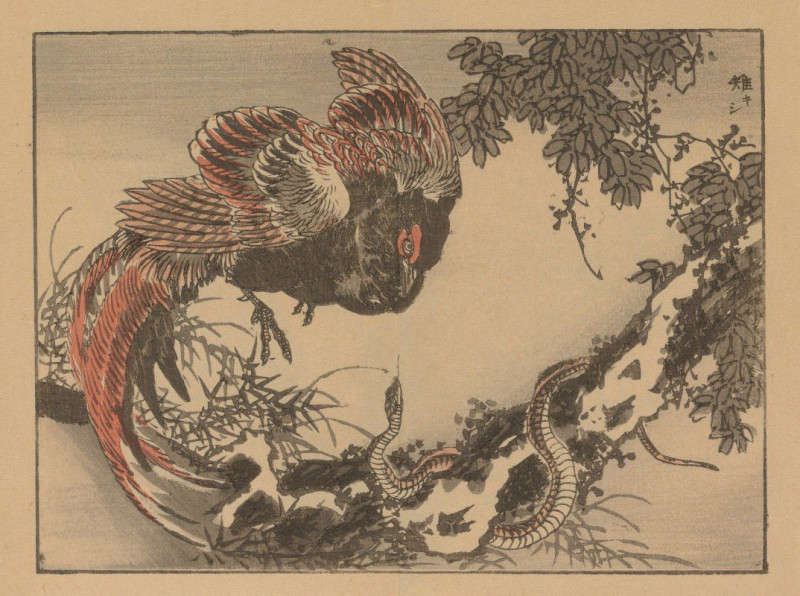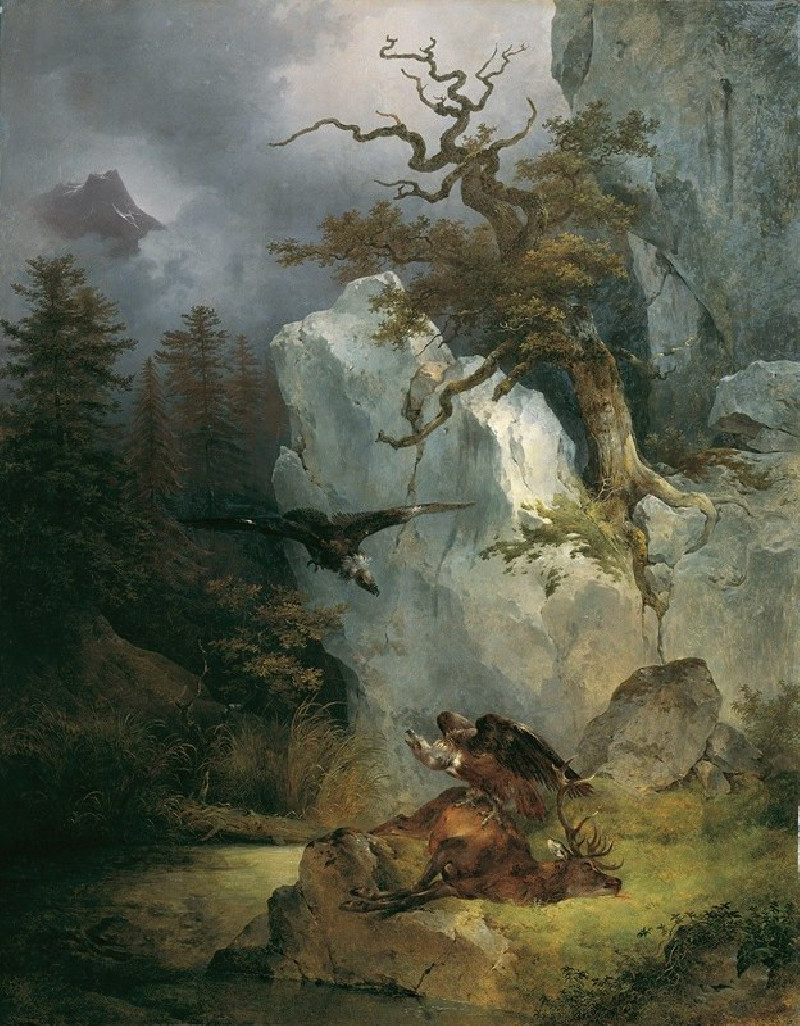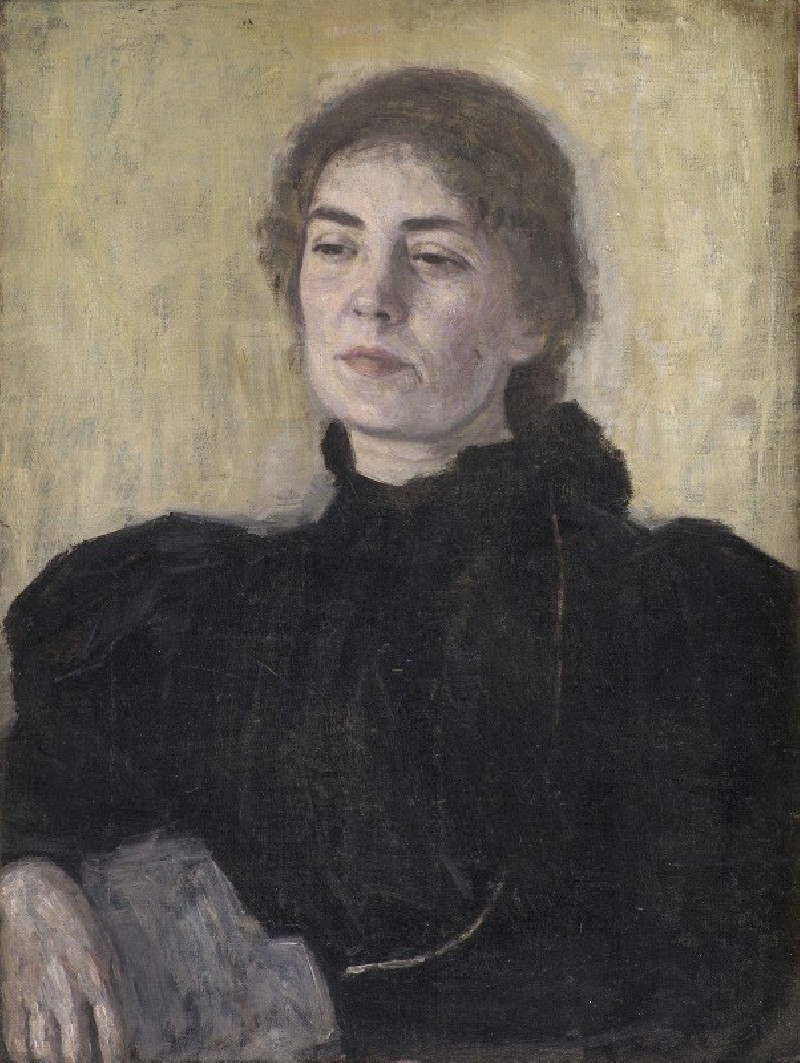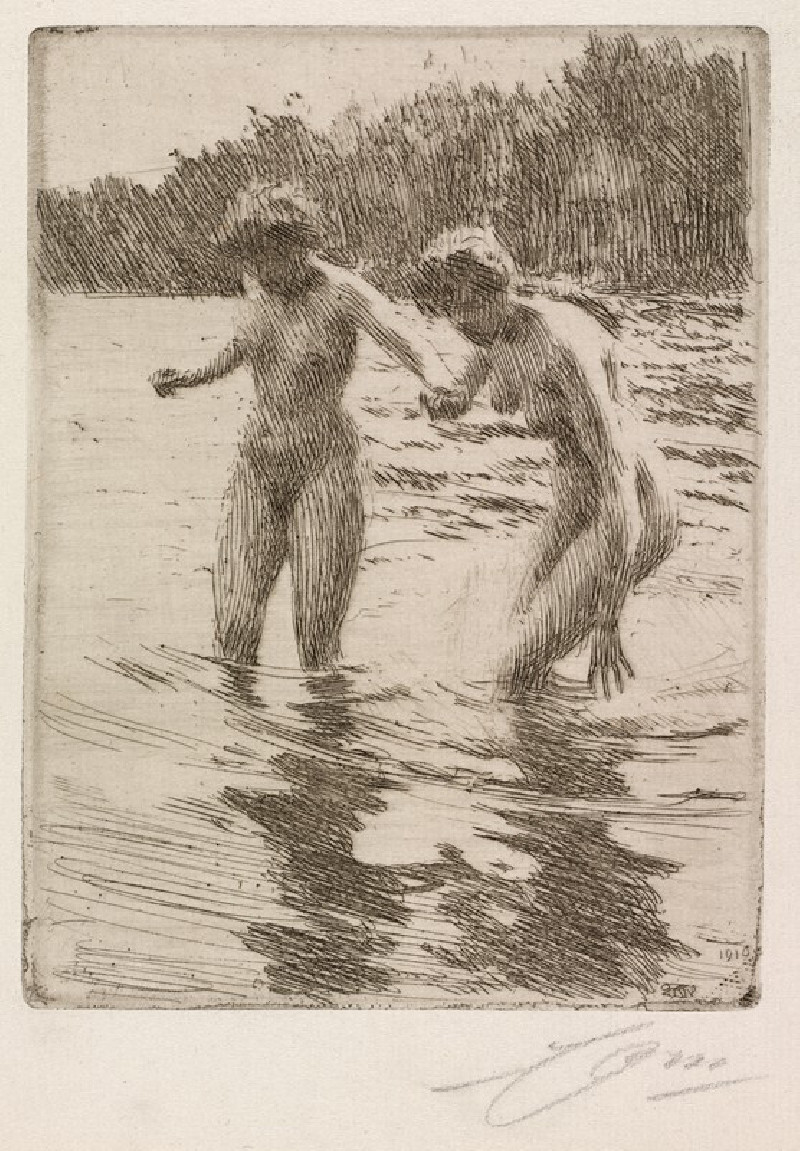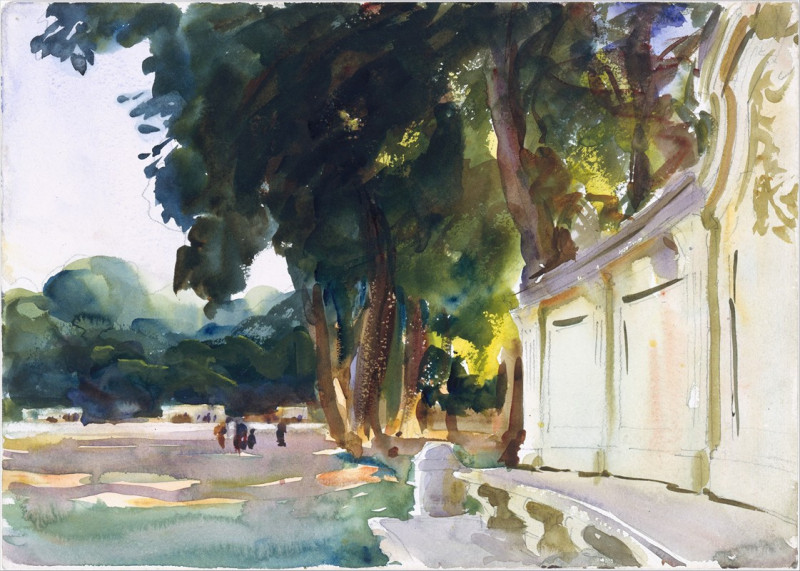Railway junction near Bois-Colombes
Technique: Giclée quality print
Recommended by our customers
More about this artwork
"Railway Junction near Bois-Colombes" by Paul Signac offers a captivating glimpse into the more muted, everyday aspects of urban and suburban life through the lens of Post-Impressionism. In this painting, Signac illustrates a rather unassuming railway junction, a scene away from the bustling city center yet full of life and activity.The composition is balanced with care, where industrial elements and nature subtly intersect. To the left, we observe a tall, slender tree that seems to mirror the industrial chimneys in the distance, suggesting a blend of natural and man-made landscapes that commonly surrounded suburban areas in the early 20th century. In the foreground, a rustic wooden hut serves as a focal point, possibly a small station or railway office, where a figure in blue appears engaged in daily duties. This human element adds a sense of life and motion to the scene.The scene is rendered with brisk, vibrant brushstrokes typical of Signac's style, infusing the ordinary setting with dynamic light and color. The choice of colors—soft browns, blues, and greens—evokes a late afternoon, where shadows begin to lengthen and the day cools down.Through this painting, Signac not only documents a location but also captures the rhythm of daily life near the industrial outskirts of Paris. It's a testimony to the period's shifting landscapes and the quiet moments in-between the rapid modernization of society.
Delivery
Returns
Paul Signac (1863-1935) was a French Neo-Impressionist painter. Together with Georges Seurat, Signac developed the Pointillism style. He was a passionate sailor, bringing back watercolor sketches of ports and nature from his travels, then turning them into large studio canvases with mosaic-like squares of color. He abandoned the short brushstrokes and intuitive dabs of color of the impressionists for a more exact scientific approach to applying dots with the intention to combine and blend not on the canvas, but in the viewer's eye.

